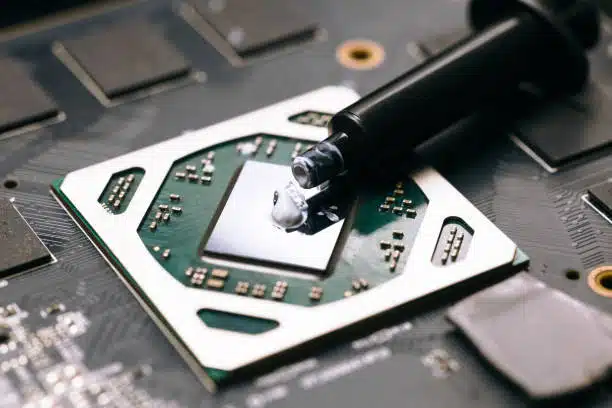The Death of Thermal Paste? Exploring Phase-Change and Graphene Pads

For decades, thermal paste has been the unsung hero of PC building. It’s that small gray blob that helps transfer heat from your CPU to the cooler, making sure your processor doesn’t overheat under load. But as processors get hotter and more power-dense, traditional thermal pastes are starting to show their limits.
A new generation of materials is beginning to challenge thermal paste’s dominance. Phase-change pads, graphene sheets, and liquid metal alternatives are pushing the boundaries of what’s possible in temperature control. Could we be witnessing the end of thermal paste as we know it?
Why Thermal Paste Might Be Reaching Its Limits
Thermal paste has a simple job: fill microscopic gaps between the CPU’s integrated heat spreader (IHS) and the cooler’s base plate. These gaps trap air, which is a poor conductor of heat. The paste’s job is to eliminate those air pockets and improve contact.
The problem is that most pastes are made of silicone-based compounds mixed with metal or ceramic particles. Over time, they can dry out, pump out under pressure cycles, or degrade due to thermal cycling. Even the best pastes need to be replaced after a few years.
As CPUs like AMD’s Ryzen 9 9950X and Intel’s Core Ultra 9 285K push past 200 watts under boost conditions, the thermal load is reaching a point where paste alone may no longer be ideal.
What Are Phase-Change Pads?
Phase-change materials (PCMs) are designed to behave like solid pads when cold and melt slightly when heated. This melting allows them to fill microscopic gaps like paste, but without the mess or long-term drying issues. Once they cool down again, they re-solidify, maintaining a consistent bond.
Companies like Thermal Grizzly and Honeywell have been developing phase-change materials that outperform high-end pastes by several degrees under sustained loads. They also offer longer life spans, making them attractive for both enthusiast builders and OEMs.
Phase-change pads are already being used in data centers and high-end laptops where reapplication isn’t practical. For desktop builders, they’re starting to appear in aftermarket coolers as a clean and reliable alternative.
Graphene Pads: The Next Step in Conductivity
Graphene, a single layer of carbon atoms arranged in a hexagonal lattice, is one of the most thermally conductive materials known to science. Graphene-based thermal pads use this property to transfer heat extremely efficiently while remaining solid and reusable.
Unlike paste, graphene pads don’t degrade over time and can be moved between CPUs. They also avoid the electrical conductivity risks of liquid metal, which can short components if applied incorrectly.
In real-world testing, premium graphene pads are already matching or slightly outperforming top-tier pastes like Thermal Grizzly Kryonaut and Noctua NT-H2. While they cost more upfront, their durability makes them cost-effective over the long term.
Liquid Metal and the Direct-Die Connection
Liquid metal compounds like Thermal Grizzly Conductonaut still deliver the best raw thermal performance, often reducing temperatures by 5–10°C compared to paste. However, they come with serious risks, including corrosion on aluminum surfaces and potential electrical shorts.
In direct-die cooling setups, where the cooler makes contact with the silicon itself rather than the heat spreader, liquid metal remains the gold standard. But as phase-change and graphene technologies improve, many builders may soon prefer their safer, maintenance-free operation.
Could Thermal Paste Really Die Out?
Not immediately. Thermal paste is cheap, widely available, and performs well enough for most builds. But in high-end systems, workstations, and servers, the shift has already begun.
Manufacturers are now testing hybrid materials that combine the convenience of pads with the conductivity of paste. Within a few years, we may see coolers ship with pre-applied phase-change materials instead of traditional paste.
The move away from paste won’t happen overnight, but the writing is on the wall. The future of CPU cooling may be cleaner, longer-lasting, and more consistent than ever before.
Final Thoughts
Thermal paste has served PC builders faithfully for decades, but technology never stands still. As heat density rises and maintenance-free cooling becomes a priority, phase-change pads and graphene materials are set to take over.
For gamers, overclockers, and anyone chasing cooler, quieter builds, the message is simple: the next time you build a PC, you might not need to reach for that little gray tube at all.
Tarl @ Gamertech

